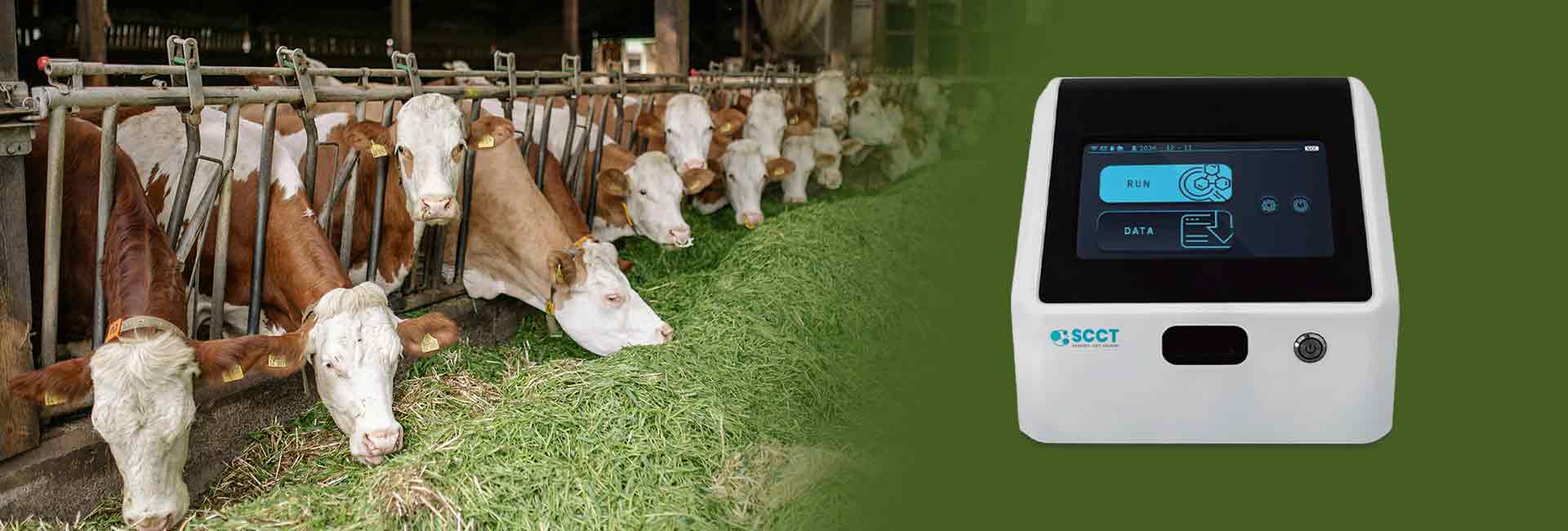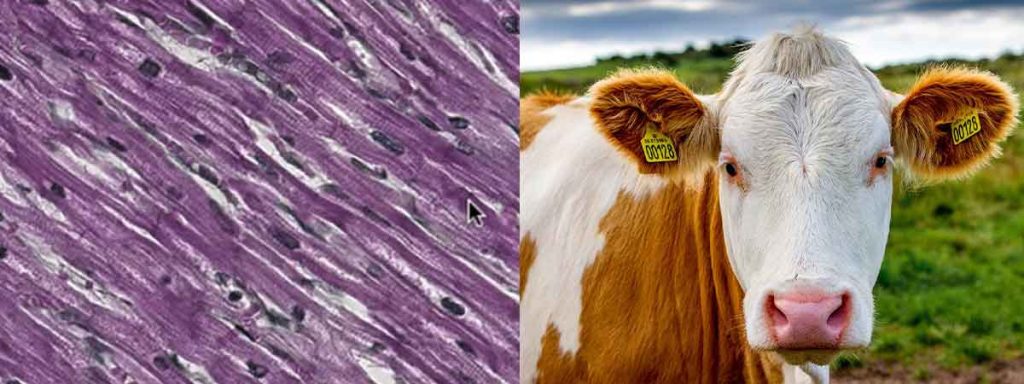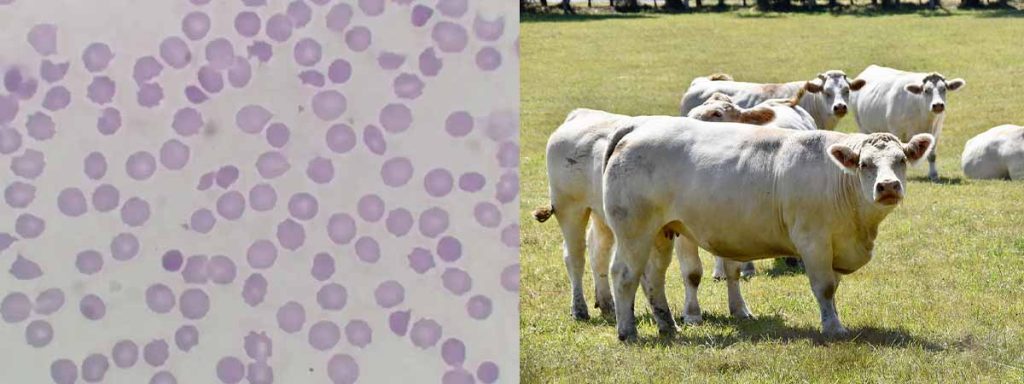

Somatic cell count testing plays a vital role in maintaining milk quality and protecting udder health. Modern dairying relies on both traditional and automated methods to monitor SCC levels, helping producers detect mastitis early and reduce milk losses.
- Elevated SCC signals lower milk production and greater risk of mastitis.
- Combining SCC with differential somatic cell count increases specificity for intramammary infection detection.
- The Dairy Herd Improvement program supports herd-level monitoring for subclinical mastitis.
Choosing the right somatic cell count tester can improve herd management and boost milk quality.
Key Takeaways
- Somatic cell count testing is crucial for maintaining milk quality and udder health. Regular monitoring helps detect mastitis early, reducing milk losses.
- Automated somatic cell count testers improve efficiency and accuracy in milk analysis. They help dairy farms comply with regulations and enhance overall herd health.
- Choosing the right testing method depends on herd size and management goals. Small farms may prefer portable tests, while large operations benefit from automated systems.
- Regular cleaning of milking equipment and proper milking routines can significantly lower somatic cell counts, leading to better milk quality.
- Dairy producers should integrate somatic cell count testing into their routine management practices. This approach supports mastitis control and improves dairy profitability.
Somatic Cell Count Testing Overview
What Is SCC?
Somatic cell count testing measures the number of somatic cells in milk. Somatic cells include leukocytes and epithelial cells, which serve as part of the mammary gland’s immune defense. These cells migrate from the bloodstream into the udder when the cow faces infection. Their presence in milk signals the cow’s immune response and helps indicate udder health.
Somatic cell count testing provides a direct way to monitor the immune status of dairy cows and detect early signs of infection.
Importance on Dairy
Dairy producers rely on somatic cell count testing to maintain milk quality and herd health. High SCC levels often mean reduced milk yield and lower commercial value.
- Laboratory methods such as Coulter counters, Fossomatic systems, and Bentley Somacount systems use advanced technologies like electric counting and laser-based flow cytometry for precise measurement.
- On-farm rapid tests, including the California mastitis test and Wisconsin mastitis test, offer quick estimates for mastitis diagnosis.
The adoption of automated somatic cell count testers has grown in the dairy industry.
| Year | Market Size (USD) | CAGR (%) | Projected Value (USD) |
|---|---|---|---|
| 2024 | 482.7 million | N/A | N/A |
| 2025-2033 | N/A | 11.2 | 1,260.5 million |
Automated testers improve milk quality, enhance herd health, and help dairy farms comply with regulations. They also make early disease detection more accessible and affordable.
Mastitis and SCC
Mastitis causes a sharp increase in SCC. The most common pathogens include Streptococcus uberis, Staphylococcus aureus, and coagulase-negative staphylococci.
| Condition | SCC Threshold (cells/mL) |
|---|---|
| Normal milk | < 100,000 |
| Inflammatory response | < 200,000 |
| Subclinical mastitis | ≥ 200,000 |
| Practical tolerance | Up to 400,000 |
Elevated SCC directly correlates with milk production loss. For example, a two-fold increase above 50,000 cells/mL can result in a loss of 0.4 kg per test day for primiparous cows and 0.6 kg for multiparous cows.
Dairy farms that monitor SCC closely can reduce financial losses and improve overall milk quality.
Testing Methods
Direct Microscopic Count
The direct microscopic count stands as one of the oldest approaches for somatic cell count testing in dairy. Technicians use a Petroff-Hausser counting chamber to analyze cell suspensions from raw milk. This method allows them to observe cell morphology, which helps identify signs of bovine mastitis. They count cells in several microscopic fields and calculate the SCC using mathematical formulas.
- This method provides direct visualization of somatic cells.
- It helps detect abnormal cell shapes and sizes, which can indicate infection.
- The method requires skilled personnel and careful sample preparation.
Although the direct microscopic count method offers accuracy, it demands significant time and expertise. Laboratories often use it as a reference method for validating automated somatic cell count tester results.
Somatic Cell Count Tester
Modern dairy operations rely on somatic cell count tester to streamline milk analysis. The Fossomatic system uses flow cytometry technology to count and characterize somatic cells in milk samples.
| Feature | Description |
|---|---|
| Technology | Flow cytometry enables precise somatic cell identification and counting. |
| Sample Throughput | Processes up to 600 samples per hour, increasing laboratory efficiency. |
| Reliability | Improved rinse system prevents blockages and reduces downtime. |
| Customizable Precision | Precision set-up allows for higher accuracy at grading limits. |
| Temperature Control | Temperature-controlled liquids optimize staining and cleaning. |
| Software Integration | Foss Integrator software enhances data handling and user experience. |
Somatic cell count tester delivers rapid and reliable results. These devices support large-scale dairy testing and help producers maintain milk quality. However, automated methods face limitations in field conditions. The accuracy of online California Mastitis Test (O-CMT) devices is lower than laboratory SCC methods due to differences in measurement techniques. O-CMT quantifies viscosity changes, while laboratory SCC testers use flow cytometry for direct cell counting. Many laboratory SCC measurements fall below the optimal range, leading to poor correlation between methods. On-farm measurements often lack systematic quality control, unlike laboratory calibration processes.
California Mastitis Test
The California Mastitis Test (CMT) provides a simple and affordable method for detecting mastitis in dairy cows. Producers mix a reagent with milk from each quarter and observe changes in viscosity. The test offers a quick estimate of SCC and helps identify cows with subclinical mastitis.
| Study | Sensitivity | Specificity |
|---|---|---|
| Meat sheep study | 0.77 | 0.51 |
| Dairy cow study | 82.4% | 80.6% |
The CMT method shows moderate sensitivity and specificity for detecting subclinical mastitis. Producers use it as a screening tool before sending samples for laboratory somatic cell count testing. The test works well for routine herd checks but may not match the accuracy of automated somatic cell count testers.
Other Methods and DHIA Records

Dairy farms also use other methods for somatic cell count testing, such as the Scepter™ sensor and differential somatic cell count (DSCC). These methods offer rapid results and help producers monitor milk quality. DSCC provides additional information about cell types, which improves mastitis detection.
DHIA records play a crucial role in SCC management.
- Producers monitor individual cow SCC levels and identify herd management problems.
- Monthly SCC reports offer insights into herd health and management practices.
- Faulty milking procedures, equipment issues, poor sanitation, inadequate facilities, stray voltage, specific pathogen infections, long lactation periods, and a high proportion of older cows can all affect SCC trends.
- DHIA records provide a quick overview of herd performance and help identify bottlenecks in management.
- Accurate data on test day is essential for effective SCC monitoring.
Somatic cell count testing remains a cornerstone of dairy herd management. Producers choose the method that best fits their operation, balancing accuracy, speed, and practicality to maintain milk quality and control bovine mastitis.
Method Comparison
Accuracy
Accuracy plays a central role in somatic cell count testing for dairy farms. Automated laboratory methods such as Fossomatic and DMSCC deliver high agreement rates with reference standards. The California Mastitis Test (CMT) and Porta SCC also show strong performance, especially for screening subclinical mastitis. The following table compares agreement and specificity rates for major methods:
| Method Comparison | Agreement | Sensitivity | Specificity |
|---|---|---|---|
| CMT vs. FSCC (0–200,000) | 97.5% | – | 97.5% |
| Porta SCC vs. FSCC (0–200,000) | 95.8% | – | 95.9% |
| DCC vs. FSCC (0–200,000) | 98.3% | – | 96.6% |
Online California Mastitis Test (O-CMT) devices show moderate agreement with laboratory SCC, with a concordance correlation coefficient of 0.53.
Speed
Speed matters for dairy producers who need rapid decisions. Automated testers like Fossomatic process hundreds of milk samples per hour. Portable devices such as the DeLaval cell counter provide results in one minute. Smartphone-based analyzers deliver answers in two minutes. The Porta SCC milk test requires 45 minutes, while the CMT offers immediate results during milking.
Cost
Cost influences the choice of somatic cell count tester for dairy operations.
- Smartphone-based diagnostic analyzers cost less than $1 per test.
- The Porta SCC milk test costs 1.92 EUR per sample.
- The DeLaval cell counter charges 2 EUR per sample.
- The CMT remains affordable and widely used for routine mastitis screening.
Practicality
Practicality depends on herd size and management needs. Small dairy farms benefit from portable, user-friendly devices and quick tests.
| Method | Cost | Practicality |
|---|---|---|
| Smartphone-based diagnostic analyzer | < $1,000 | Portable, user-friendly, quick results (2 min) |
| California Mastitis Test (CMT) | N/A | High sensitivity and specificity for mastitis detection |
| Porta SCC milk test | 1.92 EUR/sample | Colorimetric test, results in 45 min |
| DeLaval cell counter | 2 EUR/sample | Battery-powered, results in 1 min |
Large dairy operations integrate automated SCC testing with herd management software. These systems collect data on milk yield, conductivity, and cow identification. Farms that automate SCC testing and data management reduce labor costs by 30% and improve milk quality.
Tip: Dairy producers should match testing methods to herd size, budget, and management goals for optimal milk quality and mastitis control.
Choosing a Tester
Herd Size
Dairy farms vary greatly in herd size, which influences the choice of somatic cell count tester. Small herds often benefit from portable devices and simple tests, such as the California Mastitis Test. Large herds require automated systems that process hundreds of samples quickly.
- Milk quality must meet legal thresholds, with somatic cell counts not exceeding 400,000 cells/ml over three months.
- Management factors, including cow characteristics and farm facilities, affect somatic cell counts.
- Seasonal changes and regional differences can impact herd health and testing needs.
- Penalties and incentives from milk processors encourage farms to maintain high milk quality.
Producers should consider how herd size affects the practicality and efficiency of milk quality assessment. Automated testers suit large dairy operations, while smaller farms may prefer manual or portable options.
Resources
Resources play a key role in selecting a somatic cell count tester. Farms with advanced facilities and skilled staff can adopt automated systems for milk quality assessment. Smaller dairies may choose cost-effective methods that require less training.
- Monitor somatic cell counts to assess udder health and identify infections.
- Separate infected cows to control contagious diseases.
- Maintain clean bedding and follow good milking routines.
- Analyze bulk tank somatic cell count to understand herd health.
- Use milk cultures to tailor management strategies.
Transitioning from traditional to automated testing systems requires planning. Farms often see elevated somatic cell counts before and after the switch, so continued monitoring is essential. Investment in technology should match the farm’s capacity and goals.
Management Goals
Management goals drive the adoption of advanced somatic cell count testing technologies. Farms aiming for higher milk quality standards and efficient mastitis detection invest in modern analyzers.
| Management Goal | Evidence |
|---|---|
| Rising demand for dairy quality control | The focus on milk safety and quality necessitates the use of somatic cell counter to detect mastitis, which is linked to high somatic cell counts in milk. |
| Technological advancements driving adoption | Innovations like real-time monitoring and portable devices enhance efficiency and accuracy, promoting wider use in dairy operations. |
| Higher milk quality standards | The need for improved detection of mastitis leads to better milk quality and herd health optimization, driving demand for somatic cell analyzers. |
Producers should integrate somatic cell count testing into routine herd health protocols. Regular monitoring, proper milking practices, and targeted management strategies help maintain milk quality and support herd health. Farms that align their testing methods with management goals achieve better milk quality assessment and improved dairy profitability.
Conclusion

Regular somatic cell count testing remains essential for modern dairying. Automated and traditional methods both help producers detect intramammary infections early. Differential somatic cell count enhances udder health monitoring, and new machinery enables large-scale testing for better mastitis management.
| Management Practice | Effect on Milk Quality |
|---|---|
| Regular cleaning of milking lines | Reduces SCC levels |
| Conducting strip cup tests | Enhances milk quality |
| Washing teats before milking | Improves overall milk quality |
Dairy farms seeking to upgrade their protocols can follow these steps:
- Culture milk to identify bacteria causing high SCC.
- Interpret test results to distinguish environmental from contagious sources.
- Enact a plan targeting milking routines, equipment care, and stress reduction.
Consistent SCC monitoring supports mastitis control and higher milk quality. Farms should match testing methods to their resources and goals for best results.
FAQ
What Is the Role of Sensitivity and Specificity in Dairy Somatic Cell Count Testing?
Sensitivity and specificity measure how well diagnostic methods detect subclinical mastitis in milk samples. High sensitivity finds most infected cows. High specificity reduces false positives. Dairy producers rely on these metrics to choose rapid diagnostic methods for accurate results and effective mastitis diagnosis.
How Do Dairy Farms Use Milk Samples for Subclinical Mastitis Diagnosis?
Dairy farms collect milk samples from cows to test for subclinical mastitis. Diagnostic tools analyze samples for somatic cell counts. Results help identify infections early. Sensitivity and specificity guide the selection of technology. Accurate diagnosis improves herd health and milk quality in the dairy industry.
Why Is Subclinical Mastitis Diagnosis Important for the Dairy Industry?
Subclinical mastitis diagnosis prevents milk losses and protects herd health. Dairy farms use diagnostic methods with high sensitivity and specificity to detect infections in milk samples. Early results allow producers to separate affected cows. This practice reduces pathogen spread and supports quality control in dairy operations.
What Are the Advantages of Rapid Diagnostic Methods for Dairy Milk Samples?
Rapid diagnostic methods provide quick results for milk samples. Dairy producers benefit from high sensitivity and specificity in subclinical mastitis diagnosis. Fast results enable timely management decisions. These methods help control pathogen transmission and maintain milk quality standards in the dairy industry.
How Do Pathogen Types Affect Sensitivity and Specificity in Dairy Diagnostic Results?
Different pathogen types influence sensitivity and specificity in diagnostic results. Dairy farms test milk samples for subclinical mastitis. Diagnostic technology must detect various pathogens accurately. Results with high sensitivity and specificity ensure reliable diagnosis and effective mastitis management in dairy herds.
